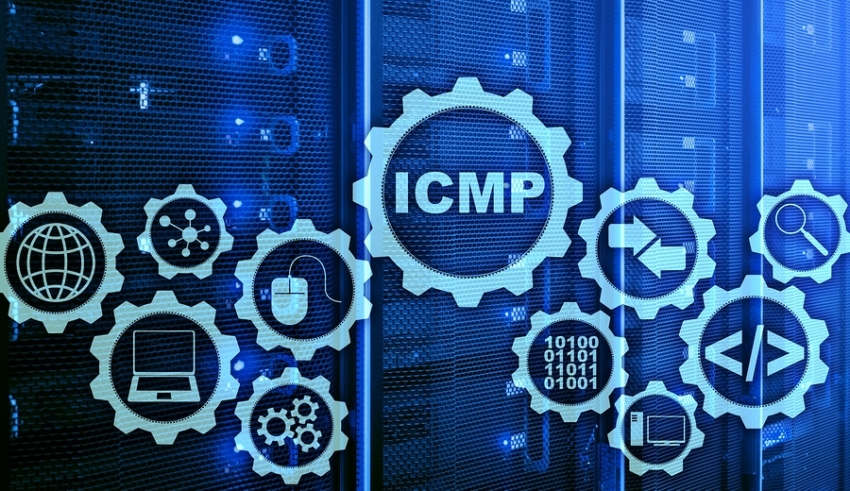
Key Takeaways:
- Efficient Diagnostics: Learn how ICMP streamlines network diagnostics.
- Troubleshooting Tools: Discover standard tools using ICMP for network analysis.
- Security Implications: Understand potential security issues and mitigation tactics.
Table of Contents
Introduction to ICMP
The Internet Control Message Protocol (ICMP) is a fundamental component of the Internet Protocol Suite, essential for effective network diagnostics and troubleshooting. ICMP is primarily used to transmit error messages and operational information, including feedback about issues encountered within the network framework. To fully understand ICMP, it’s crucial to delve into its functionalities and significance in aiding network communication and stability.
ICMP’s role in maintaining efficient network operations cannot be overstated. Beyond simply reporting errors, ICMP provides critical insights that allow network administrators to pinpoint and resolve issues quickly, thereby maintaining high levels of network performance and reliability.
How ICMP Works
ICMP is an integral part of the Internet Protocol (IP) suite, with its messages encapsulated within IP datagrams. When network issues arise—ranging from unreachable destinations to excessive delays—ICMP messages are generated to inform the source device of the problem. This feedback mechanism enables swift and accurate troubleshooting, allowing network administrators to monitor the network’s health and take necessary actions promptly.
For instance, when a router fails to deliver a packet to its destination due to a missing route or unreachable address, it generates a “Destination Unreachable” ICMP message and sends it back to the source. This ensures the sender knows the delivery issue, enabling them to investigate and respond appropriately. Furthermore, ICMP messages like “Time Exceeded” are crucial in identifying the locations of faults within a network path, thus highlighting the robust nature of this protocol.
Common ICMP Types and Their Uses
ICMP messages come in various types, each designated for specific functions that assist in network diagnostics. Understanding these types is critical for leveraging ICMP effectively. Here are some of the most common ICMP types and their primary uses:
- Echo Request and Echo Reply: These messages form the basis of the Ping utility. The Echo Request is sent to a host, and the host responds. This exchange verifies that the host is reachable and can communicate over the network. The simplicity and speed of these messages make them ideal for quick network checks.
- Destination Unreachable: This message type indicates a particular destination cannot be reached. The reasons for this could vary from a network being unreachable to a protocol or port being inaccessible. Such messages are invaluable in flagging connectivity issues that could hamper device communication.
- Time Exceeded: Often utilized by the Traceroute utility, this message indicates that a packet’s time-to-live (TTL) value has expired, helping to identify where delays or failures occur along a packet’s route. These messages can reveal bottlenecks and inefficiencies in the network path.
Benefits of ICMP in Network Management
ICMP provides immense benefits in network management, offering tools and data crucial for monitoring and maintaining network health. ICMP enables efficient fault isolation and performance assessment by providing real-time feedback on network conditions. This data allows network professionals to quickly identify and address issues, minimizing downtime and ensuring that networks operate smoothly.
Moreover, ICMP’s role in supporting utilities like Ping and Traceroute underscores its significance. These tools, driven by ICMP messages, are fundamental in network diagnostics, making it easier for administrators to ensure reliable and efficient network operations. The ability to pinpoint issues and measure network performance accurately helps maintain an optimized and minimally disruptive network environment. Additionally, ICMP’s functionality aids in proactive network management, allowing potential issues to be identified and resolved before they escalate into significant problems.
ICMP and Network Security
Vulnerabilities
Despite its significant utility, ICMP is not without its security challenges. Attackers can misuse ICMP for network surveillance, identifying active devices, and mapping network topologies. This information can aid in planning sophisticated attacks. Additionally, ICMP can be exploited for Denial of Service (DoS) attacks, overwhelming a target with large volumes of ICMP requests to disrupt its operations.
Network security professionals must be vigilant about these vulnerabilities, incorporating ICMP monitoring and defenses into their broader security strategies. Recognizing that ICMP can be both a diagnostic tool and a vector for attacks is essential for comprehensive network security planning. This dual role makes it imperative for security measures to be balanced, ensuring operational efficiency while guarding against threats.
Mitigation Practices
Several best practices can be implemented to mitigate the security risks associated with ICMP. Network administrators often resort to rate-limiting ICMP messages, which reduces the likelihood of overwhelming a network with malicious traffic. Other common strategies include completely blocking certain ICMP types that are frequently targeted for abuse, such as pings during high-risk periods.
Implementing robust intrusion detection systems (IDS) and staying updated on the latest security patches can fortify defenses. By adopting these measures, it’s possible to harness the benefits of ICMP while minimizing its security risks. Continuous monitoring and strategic configuration adjustments are vital to maintaining a secure and resilient network setup.
Conclusion
ICMP remains a cornerstone of network diagnostics and troubleshooting, offering powerful tools for monitoring, diagnosing, and maintaining network health. ICMP ensures efficient and reliable network operations with its feedback mechanisms and diagnostic capabilities. Network professionals can better manage and protect their infrastructures by understanding how ICMP functions and the potential security implications, ensuring efficient and reliable network operations.
The tools like ICMP cannot be overstated. Their continued in the fast-evolving landscape of network technology relevance and application are testaments to their robust design and essential functionality in keeping modern networks running smoothly and securely. Embracing and understanding ICMP’s potential and limitations will empower network administrators to optimize network performance and mitigate risks effectively.














